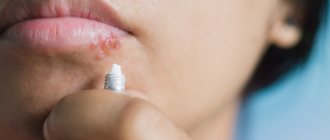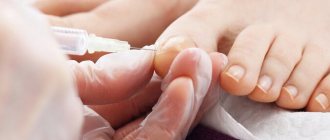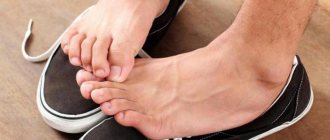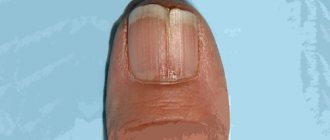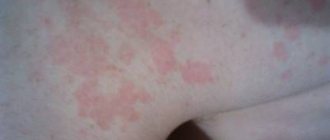Sometimes people complain that the mole bleeds. This often happens due to damage to the nevus. In such situations, it is important to provide yourself with first aid as soon as possible and stop the bleeding. After this, you should consult a doctor, which will avoid complications and unpleasant consequences, since sometimes birthmarks transform from benign to malignant.
Even with minor trauma to the nevus, the injury should be properly treated.
What are the dangers of injuring moles?
The main problem and concern for any person is the trauma of birthmarks. As medical practice shows, this phenomenon can lead to death. In the event that a cancerous disease is started (without timely treatment of bleeding moles of a malignant nature), metastasis to the bone tissue may occur. Rubbing the nevus, scratching, squeezing and cutting can provoke the development of severe inflammation and bleeding.
Recommendations from experts
If a person has pigmented spots on the body, it is important to follow the recommendations of skin care specialists. Namely:
- spend less time in the sun;
- do not visit the solarium;
- control the level of hormones in the body;
- You should wear comfortable shoes (appropriate to your size);
- be careful when performing everyday tasks.
A bleeding mole should be sealed to prevent infection from entering the body. Doctors prohibit removing nevi on your own, since you can introduce an infection into the body and seriously harm your health.
For what reasons is blood released from moles?
There are several factors under the influence of which blood can be released from a nevus, namely:
- trauma to the birthmark;
- degeneration of moles into malignant neoplasms;
- the development of a strong inflammatory process in the body.
Many people know why moles bleed, but not everyone knows that such a phenomenon can be a sign of the development of pathology in the human body.
It is important to know!
Baba Nina about Russia: “Thunder will strike in October 2022 and money will fall from the sky.
A mole is bleeding - this is a dangerous symptom that requires immediate medical attention. There are two reasons - the degeneration of a nevus into a malignant formation and mechanical damage. You should respond to what happened as soon as possible to avoid undesirable consequences.
Diagnostic process
Before prescribing treatment, the doctor must conduct a medical examination of the patient. During the process, the doctor examines the problematic pigment spot. Using special devices, he feels bleeding moles and analyzes the general condition of the formations. During dermatoscopy, the doctor will identify any pathological processes and changes. There is no need to be afraid of diagnosis, since all procedures do not cause pain to the patient. In the process of studying nevi, it is prohibited to perform a biopsy; only histology is allowed, which is performed only after surgical removal of the nevus.
How to stop bleeding?
The mole is bleeding, what should I do? Self-medication can be harmful and make the situation worse. Often, a specialist recommends treating bleeding wounds with hydrogen peroxide. Before you begin handling, it is important to thoroughly wash your hands with an antibacterial detergent - this will help prevent the development of an infectious disease. Disposable gloves should be used to prevent microorganisms from entering wounds. Using cotton wool or cotton pads, it is necessary to treat bleeding areas with peroxide.
If a red mole bleeds, use clean gauze or a bandage. It can be purchased at any pharmacy. It is necessary to fold the material in several layers and apply it to the bleeding moles. You should take a comfortable body position. Keep the material near the wound until the bleeding stops. After this, the wound should be dried. To do this, you can use brilliant green or iodine.
A slight discharge of blood from a mole is not life-threatening. If the bleeding is excessive and occurs systematically, it is important to immediately visit the hospital and undergo a thorough medical examination.
Why might a mole bleed?
The formations can be flat or convex, depending on the depth of melanocytes—cells that synthesize melanin—in the skin. Education code according to ICD-10: D23. Hanging forms occur against the background of decreased immunity. The appearance is provoked by the human papillomavirus, classified as viral warts, ICD-10 code: B07. Education needs to be removed. When maintained intact and constantly monitored, nevi do not pose a health hazard. To keep HPV under control and prevent papillomatosis, it is necessary to take measures to strengthen the immune system, otherwise the papillomavirus will spread throughout the body. After correction of immunity, warts stop growing.
Ichor, purulent discharge, and blood are released from a mole in two cases: mechanical damage and degeneration into a tumor. The appearance of malignant cells in the formation is provoked by injuries.
Nevi are injured for the following reasons:
- friction on the belt, elastic band, bra base, collar, cuffs;
- compression from tight clothing, seams, narrow shoes;
- scratching, which is typical for children;
- injuries from hard objects: door frame, furniture;
- shaving on the face of men, in the armpits, genitals.
If the formation is damaged, blood will come out. To prevent infection from entering the wound and causing suppuration, it is necessary to properly treat the injury.
If the nevus degenerates into melanoma, along with discharge from the mole, the patient observes additional symptoms:
- uneven edges, asymmetry;
- uneven color from pinkish to dark brown;
- increase in size, dynamics of growth, diameter more than 5 mm, several moles have appeared around, tending to merge into one formation;
- fluid discharge: ichor, pus, blood;
- discomfort when pressing: pain, burning, itching, blisters on the surface.
Ways to remove moles
Doctors prohibit removing moles on your own at home, as complications and severe pain may occur. If blood is released from moles, you should consult a doctor. First of all, the specialist will stop the bleeding. After this, he will diagnose nevi and remove them (if necessary). Among the safest and most popular methods of getting rid of pigmented spots are:
- Surgical excision. The procedure is carried out under local anesthesia. Using a scalpel, the surgeon removes the mole. The surgical procedure lasts approximately 50 minutes. If the wound does not bleed after the mole is removed, the patient can go home. The doctor applies a cosmetic suture to a large wound, which looks neat, but later a scar may form. To avoid this, it is important to follow all doctor's recommendations. Absorbable agents should be used and the crusts that form to protect the wounds should not be touched.
- Laser technology is the most modern and safe method of mole removal. During the procedure, the doctor gradually cuts off the mole. It only takes a few minutes to remove one mole. In rare cases, laser surgery leaves a scar.
It is prohibited to remove moles on your own, as this can provoke the appearance of malignant tumors. After removal, in many cases, a histological examination is necessary to understand the type of cells.
What is important to know?
If a mole on the face bleeds, it is forbidden to use a traditional treatment method (applying a compress or lotion), since such remedies can provoke the development of cancer cells and cause serious complications.
It is forbidden to touch a bleeding mole with your hands, as this can cause infection. It is forbidden to rip off the scabs - this can cause excessive bleeding.
If the mole has fallen off, you should place it in a sterile container and take it to the doctor for a histological examination. It is important to consult a doctor promptly if blood from a mole appears systematically.
The healing process of the nevus should be monitored by a doctor. If the formation is malignant, then cancer cells will begin to actively multiply throughout the body, which will provoke a worsening of the disease.
If severe pain occurs, you can take a painkiller.
When to see a doctor, possible complications
An injured mole heals completely in approximately three weeks. If during this period it was not possible to protect the formed crust from being torn off, it is worth thinking about removing the nevus if it is located in a place of constant friction - on the back, neck, face, scalp, abdomen. If the crust comes off and the wound gets infected and suppuration begins, you need to show the infected nevus to a doctor to prescribe antibiotics. It is better to remove it to prevent complications, scars, and degeneration of the formation into skin cancer.
The crust does not dry out and regularly gets wet due to incessant discharge from the wound - a reason to consult a doctor. A dermatoscopy should be performed - an examination of the formation by a dermatologist under a magnifying glass.
When a nevus degenerates into melanoma, additional symptoms may be present along with bleeding. If the age spot rapidly increases in size, changes color, hurts, itches, swells, has uneven edges, cracks, nodules and blisters, and new nevi appear around, you should consult a doctor to make a correct diagnosis and prescribe therapy.
Bleeding is always a concern . Even those people who are not inclined to faint at the sight of blood may become frightened when they discover the appearance of bloody discharge from nevi. Everyone knows about the ability of birthmarks to degenerate into malignant formations, so concern may not be unfounded .
Photo 1. Bleeding from a mole is a reasonable cause for concern. Source: Flickr (Ryan)
Under what conditions should you go to the hospital immediately?
It is important to consult a surgeon or dermatologist if a mole bleeds. The cause of the blood will be determined by the doctor after examining the patient. You should definitely visit an oncologist in order to identify the form of the formation. If the mole was malignant, then pathogenic microorganisms will begin to multiply throughout the body. If blood flows without injury, a strong inflammatory process develops in the body. In such circumstances, it is important to consult a doctor. You should visit your doctor immediately if:
- bleeding is systematic and profuse;
- moles have changed color;
- education is growing and its form is changing;
- there is a feeling of burning and itching;
- the mole is filled with blood;
- nevus causes severe discomfort.
Under such conditions, self-medication at home is not only not recommended, but also dangerous.
Helping a child with injury
Children are known to be very active and careless. When playing in the sandbox or with a ball, they can easily injure the nevus. If your baby has injured a birthmark, you need to wash the area with soap, but do not wipe it with a towel. Blot it with a sterile bandage and pour hydrogen peroxide on the wound. Do not treat the mole with alcohol, this may cause a burning sensation and frighten the baby. A blood clot should form at the site of injury. There is no need to try to remove it with tweezers or other methods.
You should not give your child a bath until the wound has healed. You definitely need to go to the doctor and follow his recommendations. Don't panic if the doctor suggests removing a nevus from your baby. Such manipulations are absolutely safe. After such a mini-surgery, the removal site may become red and slightly swollen, but this is a natural reaction to surgery. After a few days, the redness will begin to fade.
After removing the nevus, do not let the child damage the wound. Try not to scratch the extraction site, as characteristic itching often appears as wounds heal. If any negative reactions occur, do not treat your baby at home using folk remedies. This may pose a danger to his health and life.
Possible complications after removal
If you neglect the process of removing a mole, then melanoma, a scar, and a scar may appear at the site of the formation. Excessive bleeding is also possible. To avoid complications, it is important to follow the specialist’s recommendations and periodically treat the wound with an antibacterial agent prescribed by the specialist. It is important not to pick off the scabs and not visit the solarium until complete recovery.
Traditional methods of treatment can greatly harm and aggravate the problem. In order not to provoke the development of complications, the neoplasm should be diagnosed in a timely manner. People with a family history of cancer should regularly visit an oncologist, since many diseases (or rather, a tendency to them) are transmitted genetically.
Skin melanoma and its dangers
Let's take a closer look at what skin melanoma is. This is a cancer that develops from pigment cells - melanocytes. Due to a violation of the DNA structure, their uncontrolled malignant growth begins. Amelanotic melanoma is a particularly dangerous form of the disease with an aggressive course. Occurs in 1.8-8.1% of cases of such skin cancer, requiring treatment to begin as early as possible.
As one of the types of malignant neoplasms of the skin, melanoma accounts for 3% of all types of cancer, and in terms of the average annual increase in cases it is ahead of other cancers (about 3.9% per year in Russia). Over the past 40 years, the number of patients with this diagnosis has increased 15 times, but at the same time there has been an increase in overall 5-year survival. This is explained by the early diagnosis of melanoma at a stage when the tumor has not had time to grow in depth, improvement of surgical treatment methods and antitumor therapy.
The prognosis for cure is most favorable if cancer is detected at an early stage. The survival rate is 90-95%. At an early stage, the tumor can be removed, and then the condition of the skin can be monitored so that in case of relapse, it can be detected in time and measures taken.


